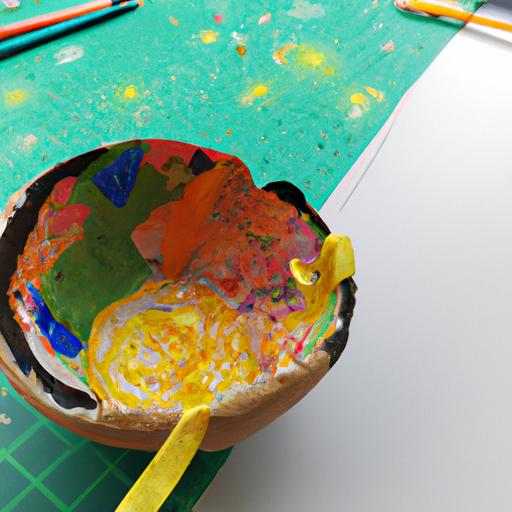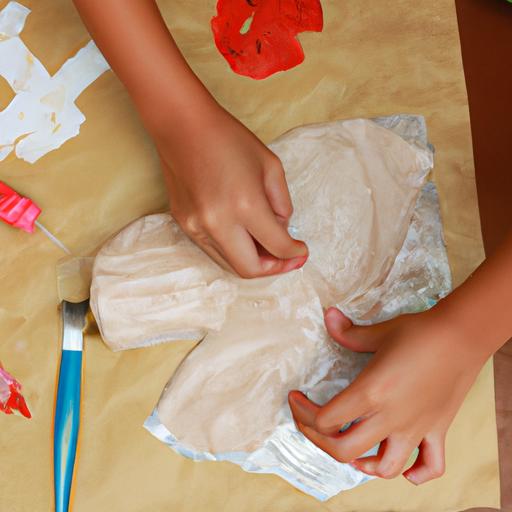What is Paper Mache? A Comprehensive Guide
Table of Contents
Introduction

Paper mache is a versatile craft that has been used for centuries to create art, decorations, and functional objects. This technique involves using paper, adhesive, and other materials to create a sturdy and lightweight structure. Whether you’re an artist, crafter, or just looking for a fun project to do with your family, paper mache is a great option. In this article, we’ll explore the history of paper mache, the materials used, techniques, and its various uses.
Brief History of Paper Mache
The origins of paper mache can be traced back to ancient China, where it was used to create helmets and armor. The technique then spread to Europe in the 17th century, where it became popular for creating decorative objects such as trays, boxes, and figurines. It was during the 19th century that paper mache became a popular material for creating carnival masks and theatrical props.
In the 20th century, paper mache continued to evolve and was used in a variety of artistic movements, including the Dada and Surrealist movements. Today, paper mache is still a popular craft, with artists and hobbyists using it to create everything from sculptures to home decor. The versatility of this craft has ensured its longevity over the years, and it continues to be a popular option for those looking to create unique and original pieces.
Materials Used in Paper Mache
To create paper mache, you’ll need a few basic materials. The most important is paper, which can be any type of paper, including newspaper, tissue paper, or even paper towels. The paper is torn or shredded into small pieces and then soaked in a mixture of water and adhesive.
The adhesive used in paper mache can vary, but the most common is a mixture of flour and water. Other options include glue, cornstarch, or wallpaper paste. The adhesive is used to bind the paper together and create a sturdy structure.
In addition to paper and adhesive, other materials can be used to create a variety of effects. For example, wire can be used to create a frame for a sculpture, while paint can be used to add color and texture. Different types of paper can also be used to create different effects, such as tissue paper for a delicate look or newspaper for a more rustic feel. The possibilities are endless, and the materials used can be customized to suit your needs and preferences.
Materials Used in Paper Mache
Aside from paper and adhesive, additional materials can also be used in paper mache to achieve specific effects or properties. For example, adding salt to the adhesive mixture can make the paper mache more resistant to mold and pests. Adding vinegar can make it more flexible, while adding sawdust or sand can make it more durable.
Other materials that can be used in paper mache include paint, varnish, and other finishing touches like glitter or beads. These materials can help to personalize your project and make it unique. It’s important to note that the materials you choose may affect the final appearance and texture of your project, so it’s worth experimenting with different options to find what works best for you.
Techniques in Creating Paper Mache
There are several techniques that can be used when creating paper mache. Each technique has its own unique advantages and disadvantages, and the one you choose will depend on the project you’re working on and the effect you’re trying to achieve.
Layering Technique
The layering technique is the most basic and commonly used technique in paper mache. It involves layering pieces of paper over a mold or frame, then applying adhesive between each layer. The process is repeated until the desired thickness and shape is achieved. This technique is great for creating simple shapes and objects, such as bowls, masks, or piñatas.
Pulp Technique
The pulp technique involves blending paper with water and adhesive to create a pulp-like mixture. The mixture is then applied to a mold or frame and molded to the desired shape. This technique is great for creating more complex shapes and objects, such as sculptures or figurines. It can also be used to create a smooth, even finish on larger surfaces.
Sculpting Technique
The sculpting technique involves using paper mache like clay to mold and sculpt a three-dimensional object. This technique is great for creating detailed and intricate shapes, such as animals or human figures. It requires a bit more skill and patience than the other techniques, but the results can be stunning.
Overall, paper mache is a versatile and accessible craft that can be enjoyed by people of all ages and skill levels. With a little bit of creativity and experimentation, the possibilities are endless.
Uses of Paper Mache
Decorative Purposes
One of the most common uses of paper mache is for decorative purposes. Paper mache can be used to create a variety of decorative objects, such as bowls, vases, and figurines. It can also be used to create larger decorative pieces, such as sculptures, wall art, and even furniture. The lightweight and durable nature of paper mache makes it a great option for creating unique and eye-catching pieces.
Functional Purposes
In addition to decorative purposes, paper mache can also be used for functional purposes. For example, it can be used to create storage boxes, organizers, and even lampshades. Because paper mache can be customized to suit individual needs, it’s a versatile option for creating functional objects that are both practical and visually appealing.
Artistic Purposes
Paper mache is also a popular medium for artists. It can be used to create sculptures, masks, and other forms of art. Paper mache is a great option for artists because it’s affordable, easy to work with, and can be used to create a wide range of effects. Whether you’re a professional artist or just starting out, paper mache is a great option for creating unique and original pieces of art.
Conclusion
In conclusion, paper mache is a versatile craft that has been used for centuries to create a wide range of objects. From decorative pieces to functional objects and art, the possibilities are endless. With a few basic materials and some creativity, you can create unique and original pieces that are both practical and visually appealing.
As we look to the future, it’s clear that paper mache will continue to be a popular option for artists, crafters, and hobbyists alike. With new techniques and materials being developed all the time, the potential for creating innovative and exciting pieces is greater than ever. So why not give paper mache a try and see where your creativity takes you?

